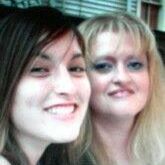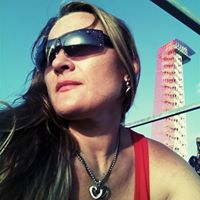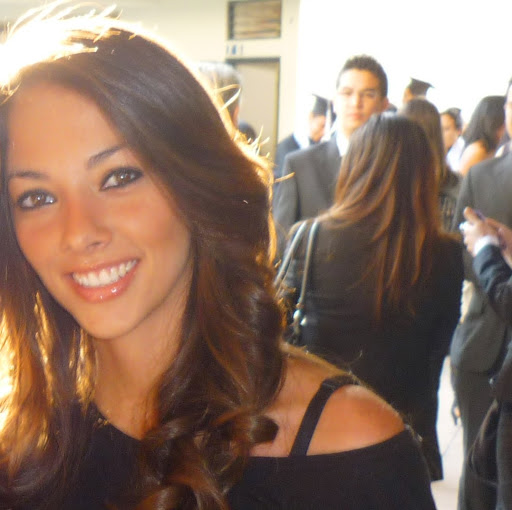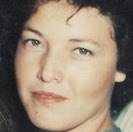Cynthia L Adams
age ~48
from San Diego, CA
- Also known as:
-
- Cindy L Adams
Cynthia Adams Phones & Addresses
- San Diego, CA
- Berkeley, CA
- Pullman, WA
License Records
Cynthia Adams
License #:
6197-S - Active
Issued Date:
Apr 17, 2012
Expiration Date:
Apr 30, 2017
Type:
Licensed Social Worker
Cynthia Denise Adams
License #:
21014 - Active
Issued Date:
May 30, 2001
Renew Date:
Dec 1, 2015
Expiration Date:
Nov 30, 2017
Type:
Certified Public Accountant
Cynthia Louise Adams
License #:
36267 - Active
Category:
Nursing
Issued Date:
Jan 1, 1981
Effective Date:
Jan 1, 1981
Expiration Date:
Oct 31, 2018
Type:
Registered Nurse
Cynthia Ann Adams
License #:
RN26706 - Active
Category:
Nursing
Issued Date:
Aug 20, 1986
Expiration Date:
Mar 1, 2018
Type:
Registered Nurse
Us Patents
-
Database System For Predictive Cellular Bioinformatics
view source -
US Patent:6631331, Oct 7, 2003
-
Filed:Nov 21, 2000
-
Appl. No.:09/718836
-
Inventors:James H. Sabry - San Francisco CA
Cynthia L. Adams - Palo Alto CA
Eugeni A. Vaisberg - Foster City CA
Anne M. Crompton - San Francisco CA -
Assignee:Cytokinetics, Inc. - South San Francisco CA
-
International Classification:G01N 3348
-
US Classification:702 19, 707 3, 435 6, 318640, 250213
-
Abstract:A system for acquiring knowledge from cellular information. The system has a database comprising a database management module (âDBMSâ). The system also has a variety of modules, including a population module coupled to the DBMS for categorizing and storing a plurality of features (e. g. , cell size, distance between cells, cell population, cell type) from an image acquisition device into the database. The system has a translation module coupled to the DBMS for defining a descriptor from a set of selected features from the plurality of features. In a specific embodiment, the descriptor is for a known or unknown compound, e. g. , drug. A prediction module is coupled to the DBMS for selecting one of a plurality of a descriptors from known and unknown compounds from the database based upon a selected descriptor from a selected compound. The selected compound may be one that is useful for treatment of human beings or the like.
-
Database System Including Computer Code For Predictive Cellular Bioinformatics
view source -
US Patent:6651008, Nov 18, 2003
-
Filed:Nov 21, 2000
-
Appl. No.:09/721154
-
Inventors:Eugeni A. Vaisberg - Foster City CA
Cynthia L. Adams - Palo Alto CA
James H. Sabry - San Francisco CA
Anne M. Crompton - San Francisco CA -
Assignee:Cytokinetics, Inc. - South San Francisco CA
-
International Classification:G06F 1900
-
US Classification:702 21, 435 4
-
Abstract:According to the present invention, computer based techniques for using information technology in therapeutics or drug discovery. In an exemplary embodiment, computer based techniques for determining information about the properties of substances based upon information about structure of living or non-living cells exposed to substances are provided. Computer software according to the present invention enables researchers and/or scientists to identify promising candidates in the search for new and better medicines or treatments using, for example, a cellular informatics database.
-
Database System For Predictive Cellular Bioinformatics
view source -
US Patent:6738716, May 18, 2004
-
Filed:Nov 21, 2000
-
Appl. No.:09/718766
-
Inventors:James H. Sabry - San Francisco CA
Cynthia L. Adams - Palo Alto CA
Eugeni A. Vaisberg - Foster City CA
Anne M. Crompton - San Francisco CA -
Assignee:Cytokinetics, Inc. - South San Francisco CA
-
International Classification:G01N 3348
-
US Classification:702 19, 707 3, 707 4, 707 6, 435 6
-
Abstract:A system for acquiring knowledge from cellular information. The system has a database comprising a database management module (âDBMSâ). The system also has a variety of modules, including a population module coupled to the DBMS for categorizing and storing a plurality of features (e. g. , cell size, distance between cells, cell population, cell type) from an image acquisition device into the database. The system has a translation module coupled to the DBMS for defining a descriptor from a set of selected features from the plurality of features. In a specific embodiment, the descriptor is for a known or unknown compound, e. g. , drug. A prediction module is coupled to the DBMS for selecting one of a plurality of a descriptors from known and unknown compounds from the database based upon a selected descriptor from a selected compound. The selected compound may be one that is useful for treatment of human beings or the like.
-
Database System For Predictive Cellular Bioinformatics
view source -
US Patent:6743576, Jun 1, 2004
-
Filed:May 14, 1999
-
Appl. No.:09/311890
-
Inventors:James H. Sabry - San Francisco CA
Cynthia L. Adams - Palo Alto CA
Eugeni A. Vaisberg - Foster City CA
Anne M. Crompton - San Francisco CA -
Assignee:Cytokinetics, Inc. - South San Francisco CA
-
International Classification:C12Q 100
-
US Classification:435 4, 422 50, 4352871
-
Abstract:A system for acquiring knowledge from cellular information. The system has a database comprising a database management module (âDBMSâ). The system also has a variety of modules, including a population module coupled to the DBMS for categorizing and storing a plurality of features (e. g. , cell size, distance between cells, cell population, cell type) from an image acquisition device into the database. The system has a translation module coupled to the DBMS for defining a descriptor from a set of selected features from the plurality of features. In a specific embodiment, the descriptor is for a known or unknown compound, e. g. , drug. A prediction module is coupled to the DBMS for selecting one of a plurality of a descriptors from known and unknown compounds from the database based upon a selected descriptor from a selected compound. The selected compound may be one that is useful for treatment of human beings or the like.
-
Characterizing Biological Stimuli By Response Curves
view source -
US Patent:7016787, Mar 21, 2006
-
Filed:Feb 20, 2001
-
Appl. No.:09/789595
-
Inventors:Eugeni A. Vaisberg - Foster City CA, US
Donald R. Oestreicher - Cupertino CA, US
Cynthia L. Adams - Berkeley CA, US -
Assignee:Cytokinetics, Inc. - So. San Francisco CA
-
International Classification:G01N 33/48
G06K 9/00 -
US Classification:702 19, 382128, 382133
-
Abstract:A method for generating stimulus response curves (e. g. , dose response curves) shows how the phenotype of one or more cells change in response to varying levels of the stimulus. Each “point” on the curve represents quantitative phenotype for cell(s) at a particular level of stimulus (e. g. , dose of a therapeutic). The quantitative phenotypes are multivariate phenotypic representations of the cell(s). They include various features of the cell(s) obtained by image analysis. Such features often include basic parameters obtained from images (e. g. , cell shape, nucleus area, Golgi texture) and/or biological characterizations derived from the basic parameters (e. g. , cell cycle state, mitotic index, etc. ). The stimulus response curves may be compared to allow classification of stimuli and identify subtle differences in related stimuli. To facilitate the comparison, it may be desirable to present the response curves in a principal component space.
-
Characterizing Biological Stimuli By Response Curves
view source -
US Patent:7657076, Feb 2, 2010
-
Filed:Jul 20, 2005
-
Appl. No.:11/186143
-
Inventors:Eugeni A. Vaisberg - Foster City CA, US
Donald R. Oestreicher - Cupertino CA, US
Cynthia L. Adams - Berkeley CA, US -
Assignee:Cytokinetics, Inc. - South San Francisco CA
-
International Classification:G06K 9/00
G06K 9/20
G06K 9/36
G06F 19/00 -
US Classification:382133, 382282, 382286, 702 19
-
Abstract:A method for generating stimulus response curves (e. g. , dose response curves) shows how the phenotype of one or more cells change in response to varying levels of the stimulus. Each “point” on the curve represents quantitative phenotype for cell(s) at a particular level of stimulus (e. g. , dose of a therapeutic). The quantitative phenotypes are multivariate phenotypic representations of the cell(s). They include various features of the cell(s) obtained by image analysis. Such features often include basic parameters obtained from images (e. g. , cell shape, nucleus area, Golgi texture) and/or biological characterizations derived from the basic parameters (e. g. , cell cycle state, mitotic index, etc. ). The stimulus response curves may be compared to allow classification of stimuli and identify subtle differences in related stimuli. To facilitate the comparison, it may be desirable to present the response curves in a principal component space.
-
Image Analysis For Phenotyping Sets Of Mutant Cells
view source -
US Patent:20020049544, Apr 25, 2002
-
Filed:Jun 22, 2001
-
Appl. No.:09/888063
-
Inventors:Corey Nislow - San Francisco CA, US
Nolan Sigal - Los Altos CA, US
David Drubin - Berkeley CA, US
Cynthia Adams - Berkeley CA, US -
Assignee:Cytokinetics, Inc.
-
International Classification:G01N033/48
-
US Classification:702/019000
-
Abstract:A method described herein phenotypes a set of mutant strains in a quantitative manner. Specifically, the method characterizes a cellular and subcellular architecture of mutant alleles grown in a variety of conditions using various morphological and molecular markers, combined with automated image acquisition and analysis. Phenotypic features may include the cytoskeleton, organelles, cell morphology, DNA replication state, the relationship of these features to each other, etc. From these features a quantitative “fingerprint” can be generated for each phenotype. This quantitative phenotypic information is made available in a database that links genotype to phenotype. Genes characterized in this manner may be clustered into functional categories, pathways, higher order protein assemblies, and the like.
-
Method And Apparatus For Predictive Cellular Bioinformatics
view source -
US Patent:20030228565, Dec 11, 2003
-
Filed:Feb 20, 2001
-
Appl. No.:09/790214
-
Inventors:Donald Oestreicher - Cupertino CA, US
James Sabry - San Francisco CA, US
Cynthia Adams - Berkeley CA, US
Eugeni Vaisberg - Foster City CA, US
Anne Crompton - San Francisco CA, US -
Assignee:Cytokinetics, Inc.
-
International Classification:C12Q001/00
C12Q001/68
G06F019/00
G01N033/48
G01N033/50 -
US Classification:435/004000, 435/006000, 702/019000, 702/020000
-
Abstract:Techniques for using information technology in therapeutics or drug discovery. In an exemplary embodiment, techniques for determining information about the properties of substances based upon information about structure of living or non-living cells exposed to substances are provided. A method according to the present invention enables researchers and/or scientists to identify promising candidates in the search for new and better medicines or treatments using, for example, a multiple biological descriptors derived from a single cell component or marker. The method employs image analysis to extract a plurality of features (e.g., cell size, distance between cells, cell population, cell type) from an image acquisition device into the database.
Wikipedia

Cynthia PickettAdams
view sourceCynthia Pickett-Adams, also known as Cynthia D. Adams (born March 23, 1961) is a former city councilmember for the City of Aliso Viejo, California. First elected ...
Medicine Doctors

Cynthia M. Adams
view sourceSpecialties:
Internal Medicine
Work:
Purdue University Student Health Center
601 Stadium Mall Dr, West Lafayette, IN 47907
(765)4941700 (phone), (765)4961227 (fax)
601 Stadium Mall Dr, West Lafayette, IN 47907
(765)4941700 (phone), (765)4961227 (fax)
Languages:
English
Description:
Ms. Adams works in West Lafayette, IN and specializes in Internal Medicine. Ms. Adams is affiliated with Franciscan St Elizabeth Central Health.

Cynthia M. Adams
view sourceSpecialties:
Orthopaedic Surgery
Work:
Sharp Rees-Stealy Medical GroupSharp Rees Stealy Medical Group Orthopedics
2929 Health Ctr Dr FL 1, San Diego, CA 92123
(858)9396505 (phone), (858)8740715 (fax)
2929 Health Ctr Dr FL 1, San Diego, CA 92123
(858)9396505 (phone), (858)8740715 (fax)
Languages:
English
Spanish
Spanish
Description:
Ms. Adams works in San Diego, CA and specializes in Orthopaedic Surgery.

Cynthia Marie Adams, San Diego CA
view sourceSpecialties:
Physician Assistant
Address:
2929 Health Center Dr, San Diego, CA 92123
9350 Campus Point Dr, La Jolla, CA 92037
9350 Campus Point Dr, La Jolla, CA 92037
Name / Title
Company / Classification
Phones & Addresses
Central Rewards, Inc.
Central Rewards. Magazines At Home. Ultimate Savings Plus. Ventri
Magazine Sales. Magazine Sales by Mail. Incentive Programs. Entertainment Bureaus. Magazines - Subscription Agents
Central Rewards. Magazines At Home. Ultimate Savings Plus. Ventri
Magazine Sales. Magazine Sales by Mail. Incentive Programs. Entertainment Bureaus. Magazines - Subscription Agents
8362 Pines Blvd., #109, Pembroke Pines, FL 33024
(877)6522168, (877)6870628
(877)6522168, (877)6870628
CTO
Elliot and Richardson
Security Brokers, Dealers, and Flotation Comp...
Security Brokers, Dealers, and Flotation Comp...
1 Sansome St Ste 1900, San Francisco, CA 94104
Sales Representative
Biosite Incorporated
In Vitro and In Vivo Diagnostic Substances
In Vitro and In Vivo Diagnostic Substances
9975 Summers Ridge Rd, San Diego, CA 92121
CFO
Coast Com
Telephone and Telegraph Apparatus
Telephone and Telegraph Apparatus
1141 Harbor Bay Pkwy, Alameda, CA 94502
Director
All Saints Health Foundation
Social Services
Social Services
(817)9227707
Director
X League Athletic Association, Inc
CTO
Elliot and Richardson
Securities Brokerage
Securities Brokerage
1 Sansome St STE 1900, San Francisco, CA 94104
(415)9843163
(415)9843163
CFO
Coast Com
Telephone Apparatus Manufacturing
Telephone Apparatus Manufacturing
1141 Hbr Bay Pkwy, Alameda, CA 94502
(510)5212708
(510)5212708
Youtube

Cynthia Adams
view source
Cynthia Adams Stephany
view source
Cynthia Adams
view source
Cynthia Adams
view source
Cynthia Adams McGrath
view source
Cynthia Adams Littlefield
view source
Cynthia Adams Means
view source
Anne Cynthia Adams
view sourcePlaxo

cynthia adams
view sourceThis is a beautiful picture of my son, Joshua. He is a up and coming successful young man.........

Cynthia Adams, CEBS, MSHR...
view sourceLas Vegas, NV

Cynthia Adams
view sourceToronto, Ontario
Googleplus

Cynthia Adams
Work:
Audi - Administradora de Ventas
Education:
Universidad La Salle - Lic. Administración

Cynthia Adams
Work:
Medical field (1990-2000)
About:
I am in my mid 50s. Mother of five adult children. Grandmother to seven.

Cynthia Adams
Work:
The New York Times
Education:
Institut d'Etudes Politiques de Paris

Cynthia Adams
About:
I don't feel much urge to post something long here, so if there is something you want to know then you can ask. If you are afraid to ask for whatever reason, then you aren't worth my time anyw...
Tagline:
I am what I am, and that is all I can be!

Cynthia Adams

Cynthia Adams

Cynthia Adams

Cynthia Adams
Get Report for Cynthia L Adams from San Diego, CA, age ~48





